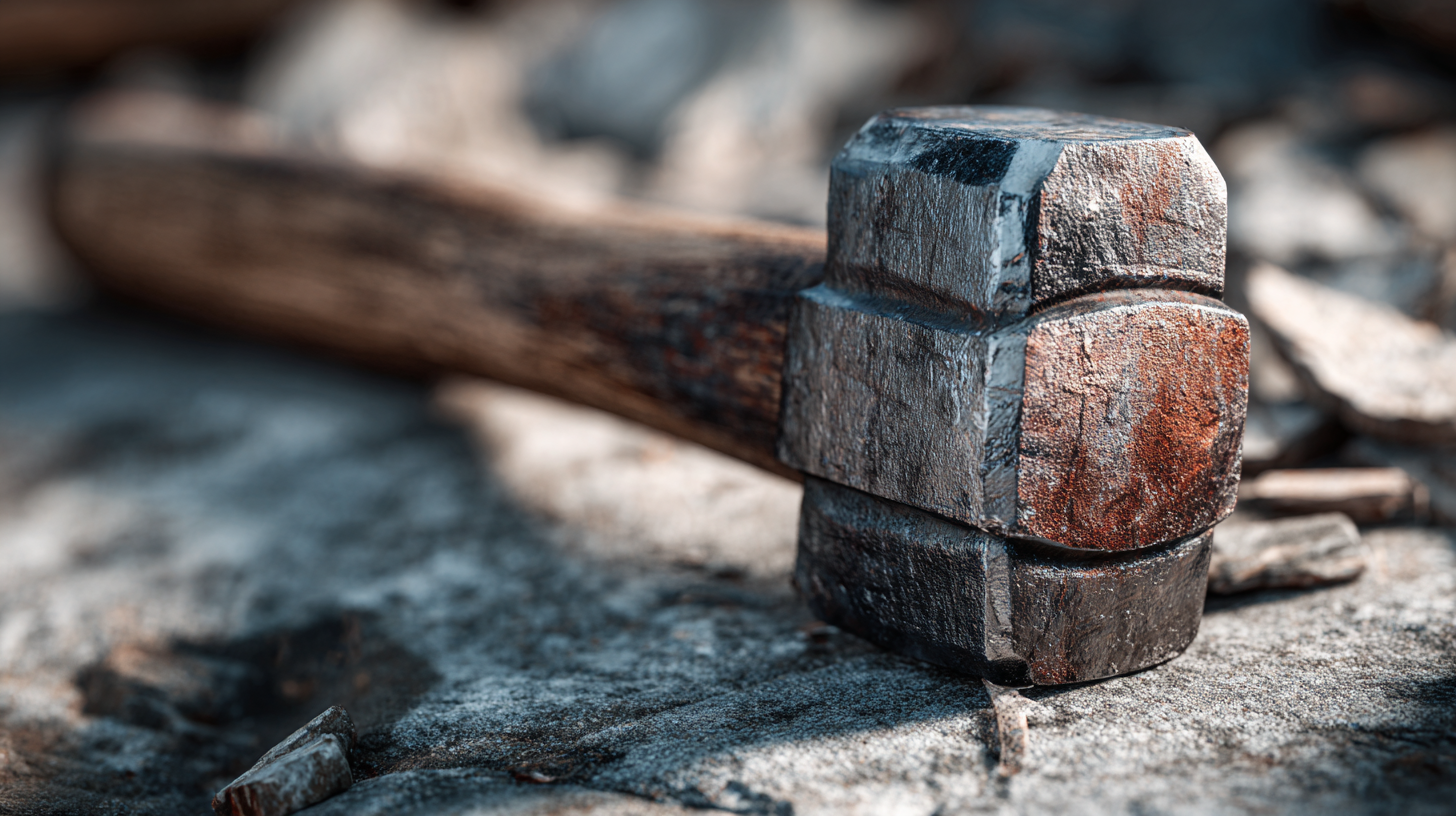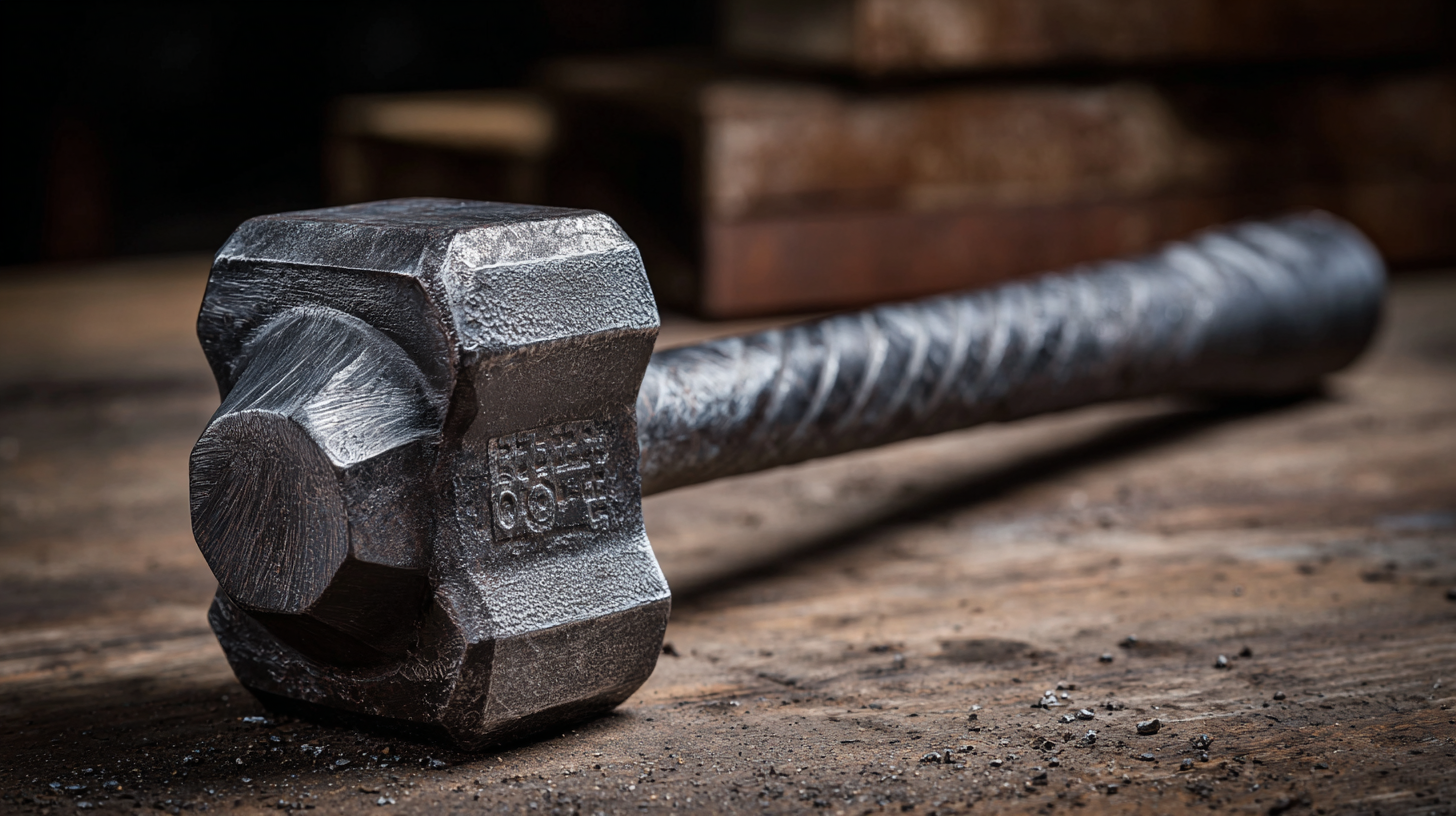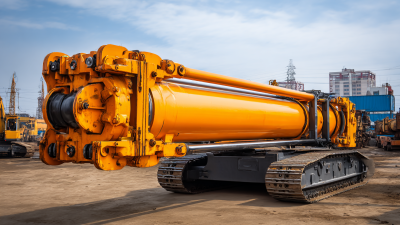 +86 13794985240
+86 13794985240
Leave Your Message
-
 CONTACT NUMBER
CONTACT NUMBER -
 CONTACT NUMBER
CONTACT NUMBER -
 CONTACT NUMBER
CONTACT NUMBER



In the world of construction and demolition, the Breaking Hammer stands out as an indispensable tool for achieving maximum impact. This powerful device, designed to fracture concrete and stone materials with ease, can significantly enhance the efficiency of any project when used correctly. Understanding how to effectively wield the Breaking Hammer not only ensures optimal performance but also promotes safety and precision in your work. Whether you're a seasoned professional or a DIY enthusiast, mastering the techniques associated with this tool can elevate your skillset and streamline your processes. In this guide, we will explore the fundamentals of using the Breaking Hammer, from selecting the right model to employing the most effective striking techniques, ensuring that you harness its full potential for your next task.

The breaking hammer, an essential tool in construction and demolition, relies on a unique combination of anatomy and mechanics to achieve maximum impact. Understanding this tool begins with its design: a heavy head, typically made of steel, is mounted on a solid handle. The weight of the head is crucial; it allows for the generation of substantial force when swung. The handle, often elongated, provides leverage, enabling the user to maximize the energy transferred during each strike.
Mechanically, the breaking hammer operates on principles of physics such as inertia and momentum. When the user raises the hammer, potential energy accumulates due to its weight. Upon swinging it downward, this potential energy transforms into kinetic energy, enforcing a powerful strike against the target material. The angle and speed of the swing significantly influence the impact efficiency. Thus, mastering the technique of swinging and positioning the hammer can greatly enhance the effectiveness of the break, ensuring optimal results in breaking through various surfaces.
 When selecting the right type of breaking hammer for a project, it’s crucial to consider both the material you will be working with and the scale of your tasks. According to a recent industry report by the American Construction Equipment Association, choosing the appropriate tool can significantly impact efficiency and safety, with the right hammer increasing productivity by up to 25% in demolition tasks. For lighter jobs, such as breaking concrete or asphalt, a smaller, electric or pneumatic hammer may suffice. These types usually weigh between 10 to 20 pounds and are more manageable, especially for residential projects.
When selecting the right type of breaking hammer for a project, it’s crucial to consider both the material you will be working with and the scale of your tasks. According to a recent industry report by the American Construction Equipment Association, choosing the appropriate tool can significantly impact efficiency and safety, with the right hammer increasing productivity by up to 25% in demolition tasks. For lighter jobs, such as breaking concrete or asphalt, a smaller, electric or pneumatic hammer may suffice. These types usually weigh between 10 to 20 pounds and are more manageable, especially for residential projects.
Conversely, for larger, more demanding tasks, such as road construction or heavy demolition, a larger hydraulic breaking hammer is recommended. These units can weigh between 50 to 150 pounds and are designed for maximum impact and durability. The same industry report emphasizes that using the correct hammer correlates with a decrease in material damage, with mishaps reduced by nearly 30%. Therefore, understanding the specific requirements of your project—whether it’s light or heavy demolition—will aid in selecting the most effective breaking hammer, ultimately enhancing operational success.
 When using a breaking hammer, prioritizing safety is essential to prevent injuries and ensure effective operation. First, always wear appropriate personal protective equipment (PPE) including safety goggles, gloves, and a hard hat. These items help shield you from flying debris and reduce the risk of serious injuries. It’s also crucial to ensure that your work area is clear of obstacles and that proper barriers are in place to protect bystanders from potential hazards.
When using a breaking hammer, prioritizing safety is essential to prevent injuries and ensure effective operation. First, always wear appropriate personal protective equipment (PPE) including safety goggles, gloves, and a hard hat. These items help shield you from flying debris and reduce the risk of serious injuries. It’s also crucial to ensure that your work area is clear of obstacles and that proper barriers are in place to protect bystanders from potential hazards.
Additionally, ensure that the breaking hammer is in good working condition before use. Regularly check for any signs of wear and tear, and don’t use equipment that shows damage. When operating the hammer, maintain a firm grip and keep your feet positioned securely to prevent slips or falls. Employ proper lifting techniques to avoid strain on your back and limbs, and always adhere to manufacturer instructions regarding usage and maintenance. By following these essential safety precautions, you can maximize the tool’s effectiveness while minimizing the risk of accidents.
When using a breaking hammer, maximizing efficiency and impact is crucial for optimal performance. Techniques borrowed from energy systems can inform our approach. For instance, in hybrid renewable energy systems, integrating multiple energy sources has proven effective in overcoming challenges and enhancing output. Similarly, a breaking hammer can benefit from the combination of various striking techniques to achieve superior force distribution. By applying methods akin to performance maximization observed in recent technological advancements, users can improve the effectiveness of their hammering actions significantly.
Furthermore, recent studies in efficient energy utilization suggest that the application of precision and technique can lead to substantial gains. For example, in heat exchangers, combining strategies such as perforated magnetic oscillators with enhanced methodologies has been shown to elevate overall performance metrics. By adopting a systematic approach that evaluates the breaking hammer's usage in a similar fashion, practitioners can identify best practices, such as optimizing the angle and swing speed to increase the force of impact while reducing fatigue. Such insights can lead to enhanced outcomes not just in construction but across various applications that utilize breaking hammers.
| Technique | Description | Efficiency Rating | Impact Level |
|---|---|---|---|
| Proper Stance | Position feet shoulder-width apart for stability. | 8/10 | High |
| Swing Technique | Use full body motion for a powerful swing. | 9/10 | Very High |
| Targeting | Aim for specific weak points in the material. | 7/10 | Medium |
| Repetition Practice | Practice swings to build muscle memory. | 6/10 | Low |
| Safety Gear | Always wear gloves and eye protection. | 10/10 | Critical |
Maintaining your breaking hammer is crucial for ensuring its longevity and performance. According to the American Concrete Institute, regular maintenance can extend the life of your demolition tools by up to 30%. To enhance the durability of your breaking hammer, it is essential to follow a structured maintenance routine. This includes checking and tightening bolts, inspecting the chisel for signs of wear, and lubricating moving parts to reduce friction. Using high-quality lubricants specifically designed for power tools can significantly prevent rust and corrosion, as indicated by data from the National Association of Manufacturers.
Additionally, proper storage is vital in maintaining your breaking hammer's condition. The Associated General Contractors of America suggests storing such tools in a cool, dry place, away from direct sunlight and moisture, to prevent deterioration. Regular cleaning after each use also prevents debris build-up that can affect the tool’s efficiency and lifespan. By investing time in these maintenance practices, you not only enhance your breaking hammer's performance but also save on repair costs, ensuring that your investment yields maximum impact for years to come.






